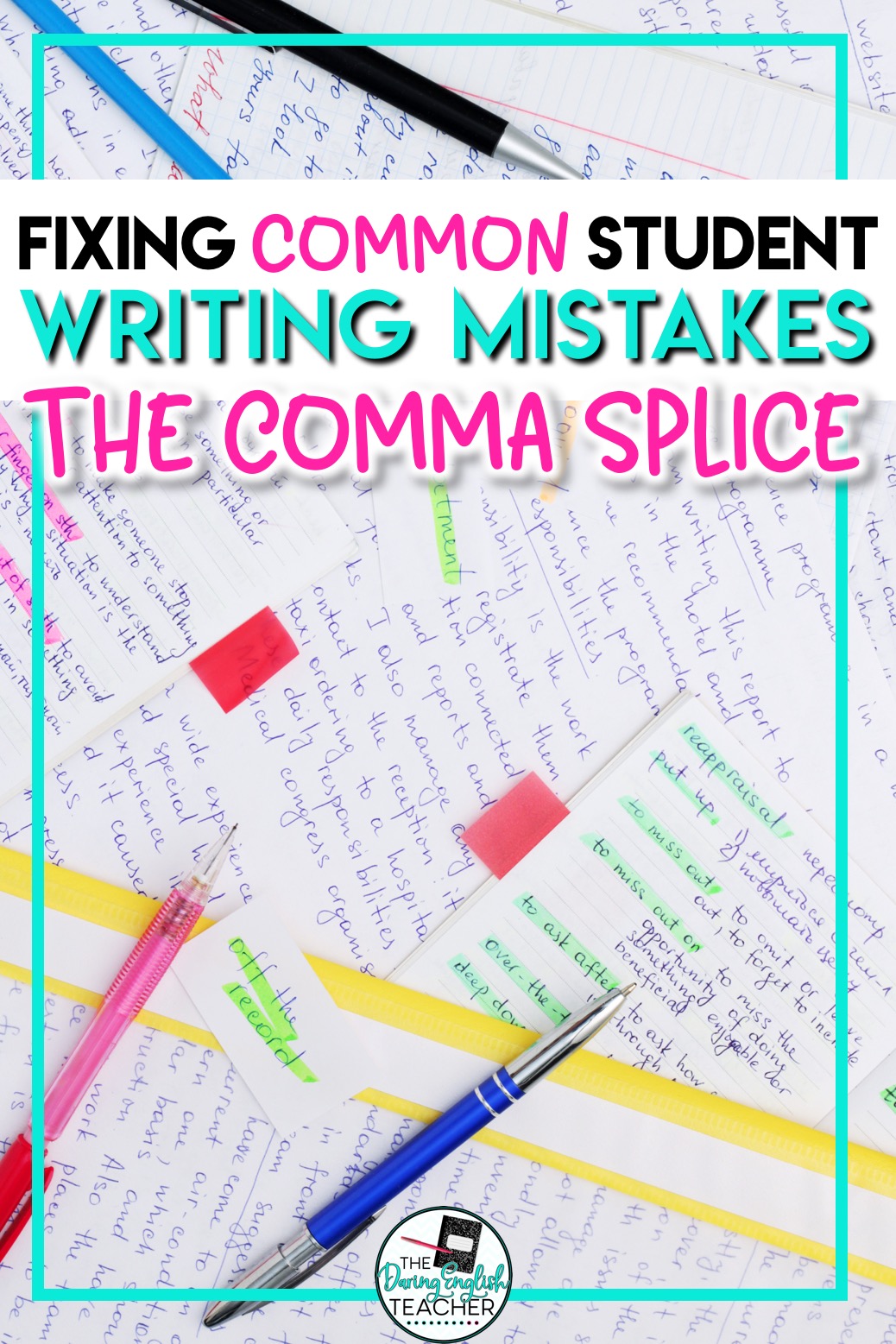Students—and teachers, alike—are capable of making these common mistakes in writing. While this can be due to a lack of proof-reading or a simple typo, many students make writing mistakes because they are unaware of the grammatical rules that are in place. Teachers can help students improve their writing by recognizing these common writing mistakes and teaching grammar and sentence lessons that will help students improve their writing. Here are three of the most common mistakes made by students today.
1. Fixing Comma Splice Mistakes
In general, comma splices are not tricky. They occur when two complete sentences are fused together with a comma rather than the appropriate conjunction. For example: “I must go to the store, we need bread.” The two parts divided by the comma are both independent clauses that should not be joined by a comma.
Before fixing this error, students must understand what comma splices are as well as how to recognize an independent clause. A quick lesson on conjunctions and sentence structure will enable your students to identify when and how to join sentences.
2. Fixing Pronoun-Antecedent Disagreements
This common writing mistake is not only a writing error, but a grammatical mistake made all too often in everyday speech. Pronoun-antecedent agreements occur when a singular pronoun links with a plural antecedent or vise versa. For example: “The student must take their test.” The word “student” is singular while the pronoun “their” is plural, and, therefore, the two are in disagreement.
Students are most likely to make a mistake like the one above because they do not know the gender identity of the ambiguous student. They attempt to atone for this with the neutral their. An easy way to fix this is by assigning gender if it is applicable. Students may hesitate to take this liberty, but the student in the example sentence can remain ambiguous in a sentence like, “The student must take her test,” or “the student must take his test.” While it may sound clunky, even “the student must take his or her test” is grammatically acceptable. However, students are most likely unaware that it is permissible to take such liberties in their writing. Start fixing this problem by letting your students know that such freedoms are allowed.
It is also important to note that the pronouns they and them are now recognized as a singular pronoun.
3. Fixing the Its and It’s Mistake
Recognizing the difference between this homophonic pair is essential to good writing. Students often mix up these two words because they are so used to possessive nouns containing a comma. In reality, its is possessive while it’s is the conjunctive version of it is. The apostrophe in it’s acts as a placeholder for space and the i.
Aside from knowing the proper use of its and it’s, the best way to correct this error is by simple proof-reading. Most students know how to use the two words correctly, but experience a slip while writing quickly. Encourage your students to take their time proofreading their writing. It can also help to have a friend proof-read it or complete peer editing as well. It also helps to teach students that possessive pronouns do not contain apostrophes. Show them examples (his, hers, theirs, ours) to help solidify this concept.






